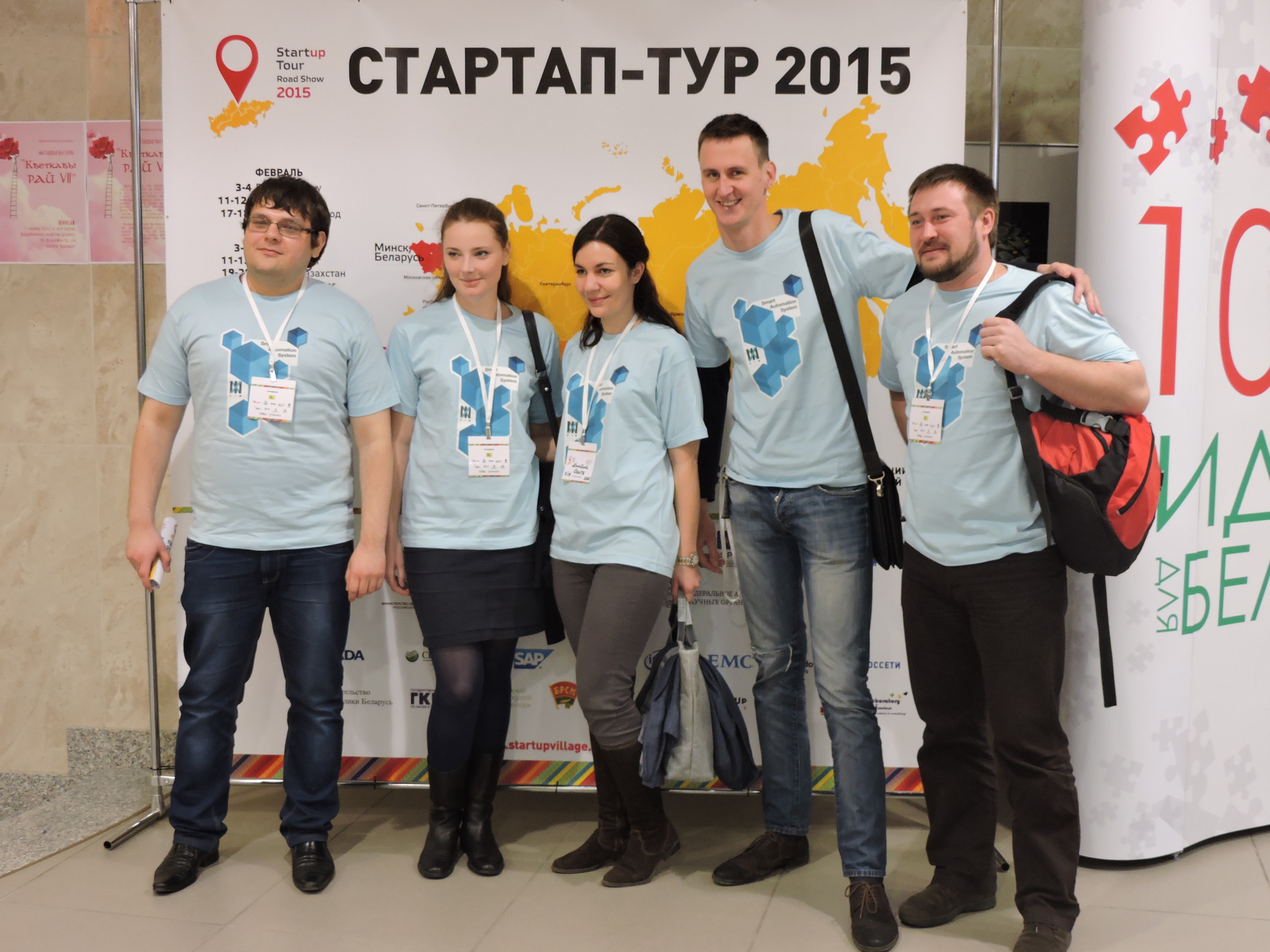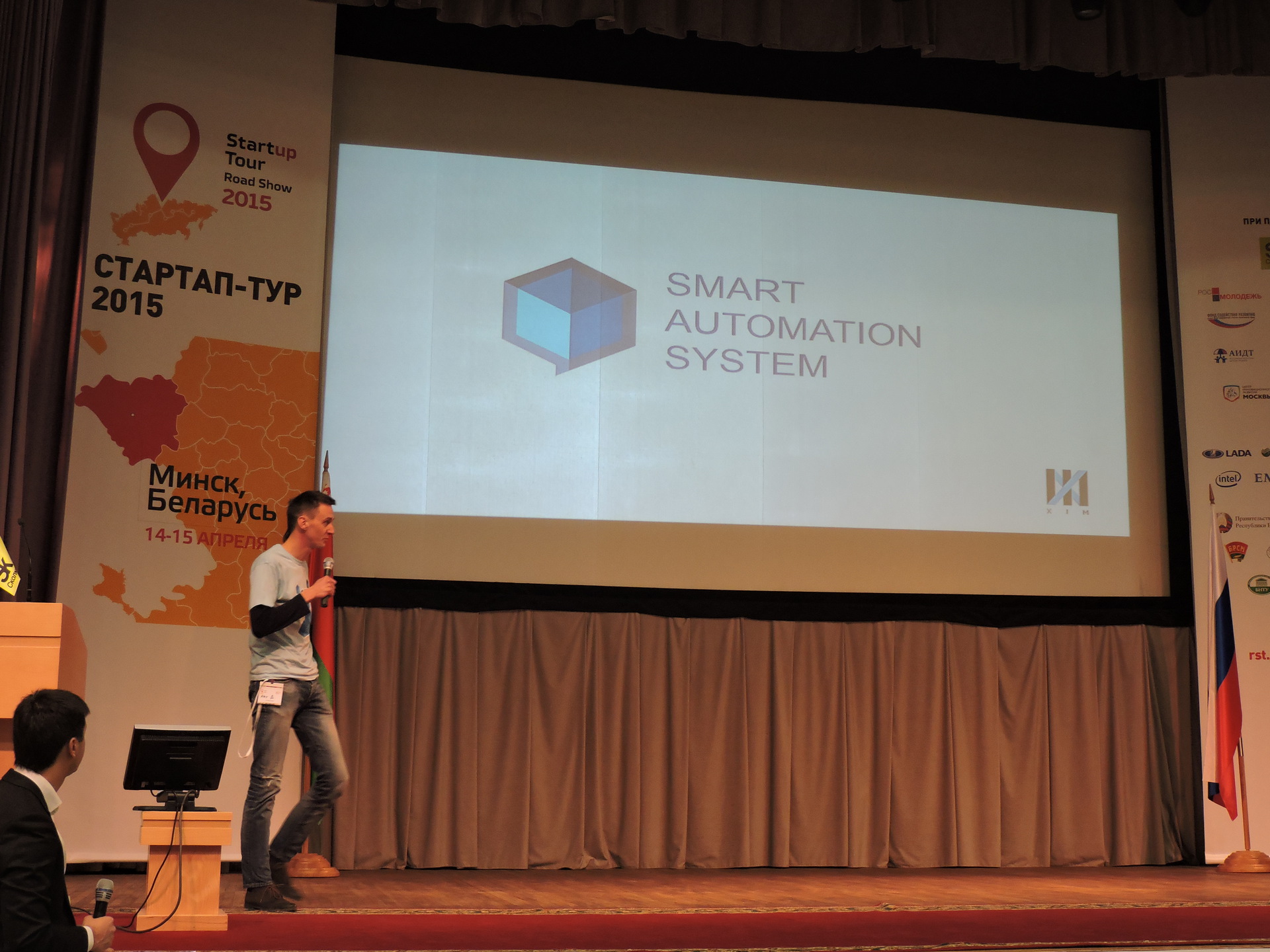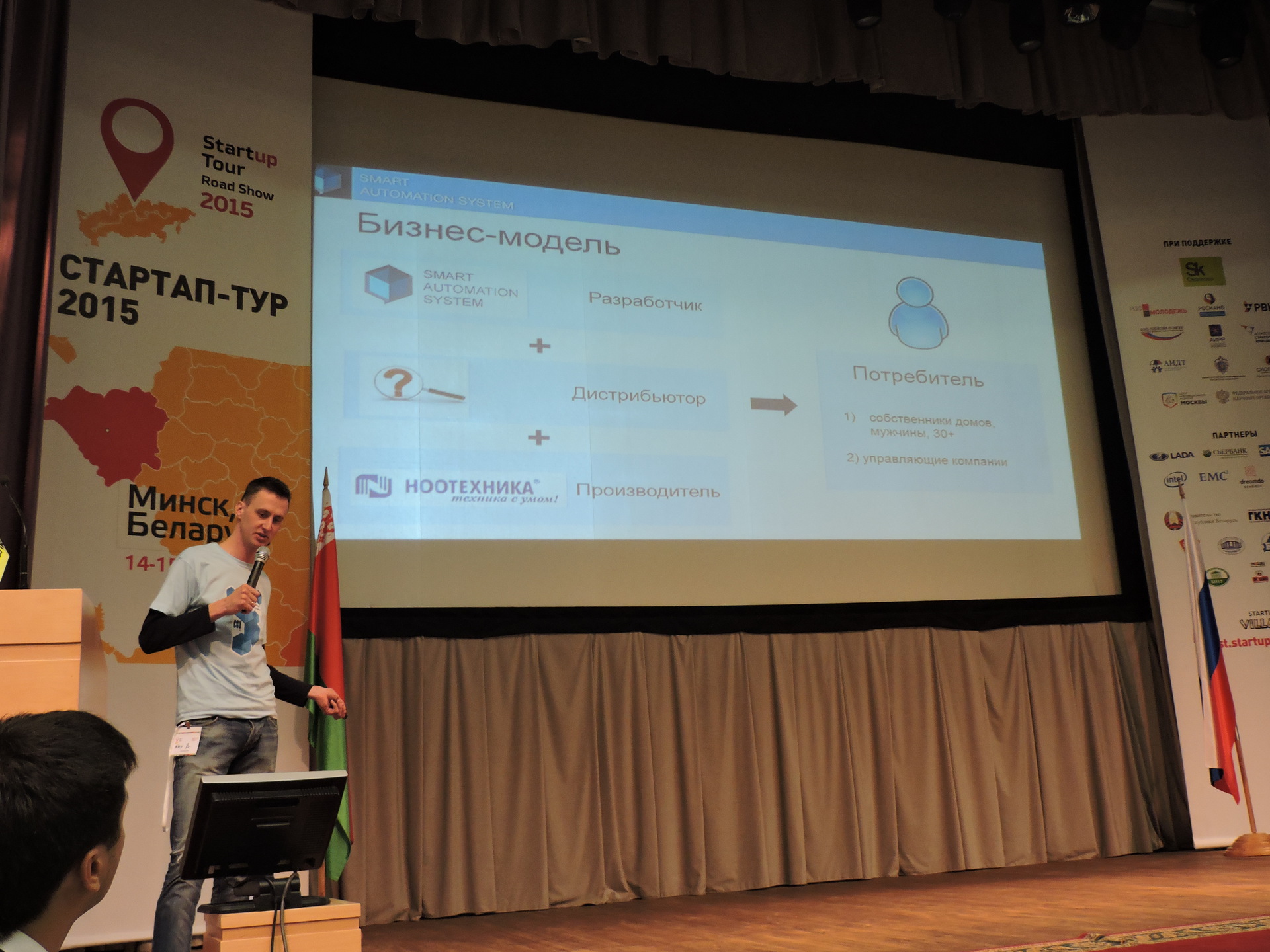Our new project on the Russian StartUp Tour 2015
On April 14-15, a regional stage of the Russian StartUp Tour , a large-scale project with the support of the Skolkovo Russian Innovation Fund, was held at the National Library of Belarus. Russian StartUp Tour contributes to the development of young projects in the field of information technology.

The first day of the event was devoted to master classes from experts, seminars and communication with IT specialists and mentors.
')
The second day of the tour is the Pitch Presentation competition, which was opened by Pekka Villakainen , a business angel from Finland and part-time advisor to the President of the Skolkovo Foundation. Pekka held a master class on the importance of the team in the project and told the story of his friend, who realized his idea only thanks to the team.
Project presentations were held in five categories:
In Minsk, more than 900 applications were submitted for participation in the competition, of which only 73 projects passed the preliminary selection of experts and were given the opportunity to present their presentations at the competition. 11 projects took part in the track “Information Technologies”. Our team also passed the preliminary selection and presented the “Smart Automation System”

Smart Automation System is a simple system that allows you to turn your home into a truly “smart home”. The system of "smart home" solves many problems, including:
In addition to the above problems, Smart Automation System helps the user to prove himself: the system allows you to customize various scenarios and plans individually. This possibility is absent in other similar systems where the functionality is limited by the modes specified by the developers.
The advantage of the Smart Automation System is an intuitive interface that is easy for the child and the elderly person to deal with. All sensors are labeled with simple images.
The project also implemented the ability to edit the plan of the house and the sensors themselves. The user can easily drag the sensor to another place on the plan, change its image or independently draw a new plan at home - there is no need to use third-party programs or change something in the code.
An important advantage of the system is the possibility of its implementation even after the completion of the house repair - the system uses Z-Wave devices that “deploy” the wireless network.
Thus, the Smart Automation System is a fully customizable Smart Home system that any user can handle.

Ask any questions you are interested in and we will answer them in our interview with the project team!
The first day of the event was devoted to master classes from experts, seminars and communication with IT specialists and mentors.
')
The second day of the tour is the Pitch Presentation competition, which was opened by Pekka Villakainen , a business angel from Finland and part-time advisor to the President of the Skolkovo Foundation. Pekka held a master class on the importance of the team in the project and told the story of his friend, who realized his idea only thanks to the team.
Project presentations were held in five categories:
- information Technology
- biological and medical technologies
- industrial technologies and materials
- energy and energy efficient technologies
- innovation for children
In Minsk, more than 900 applications were submitted for participation in the competition, of which only 73 projects passed the preliminary selection of experts and were given the opportunity to present their presentations at the competition. 11 projects took part in the track “Information Technologies”. Our team also passed the preliminary selection and presented the “Smart Automation System”
Smart Automation System is a simple system that allows you to turn your home into a truly “smart home”. The system of "smart home" solves many problems, including:
- Combining individual systems (lighting, climate control, etc.) into a single whole
- Saving resources
- Providing comfort
In addition to the above problems, Smart Automation System helps the user to prove himself: the system allows you to customize various scenarios and plans individually. This possibility is absent in other similar systems where the functionality is limited by the modes specified by the developers.
The advantage of the Smart Automation System is an intuitive interface that is easy for the child and the elderly person to deal with. All sensors are labeled with simple images.
The project also implemented the ability to edit the plan of the house and the sensors themselves. The user can easily drag the sensor to another place on the plan, change its image or independently draw a new plan at home - there is no need to use third-party programs or change something in the code.
An important advantage of the system is the possibility of its implementation even after the completion of the house repair - the system uses Z-Wave devices that “deploy” the wireless network.
Thus, the Smart Automation System is a fully customizable Smart Home system that any user can handle.
Ask any questions you are interested in and we will answer them in our interview with the project team!
Source: https://habr.com/ru/post/255975/
All Articles